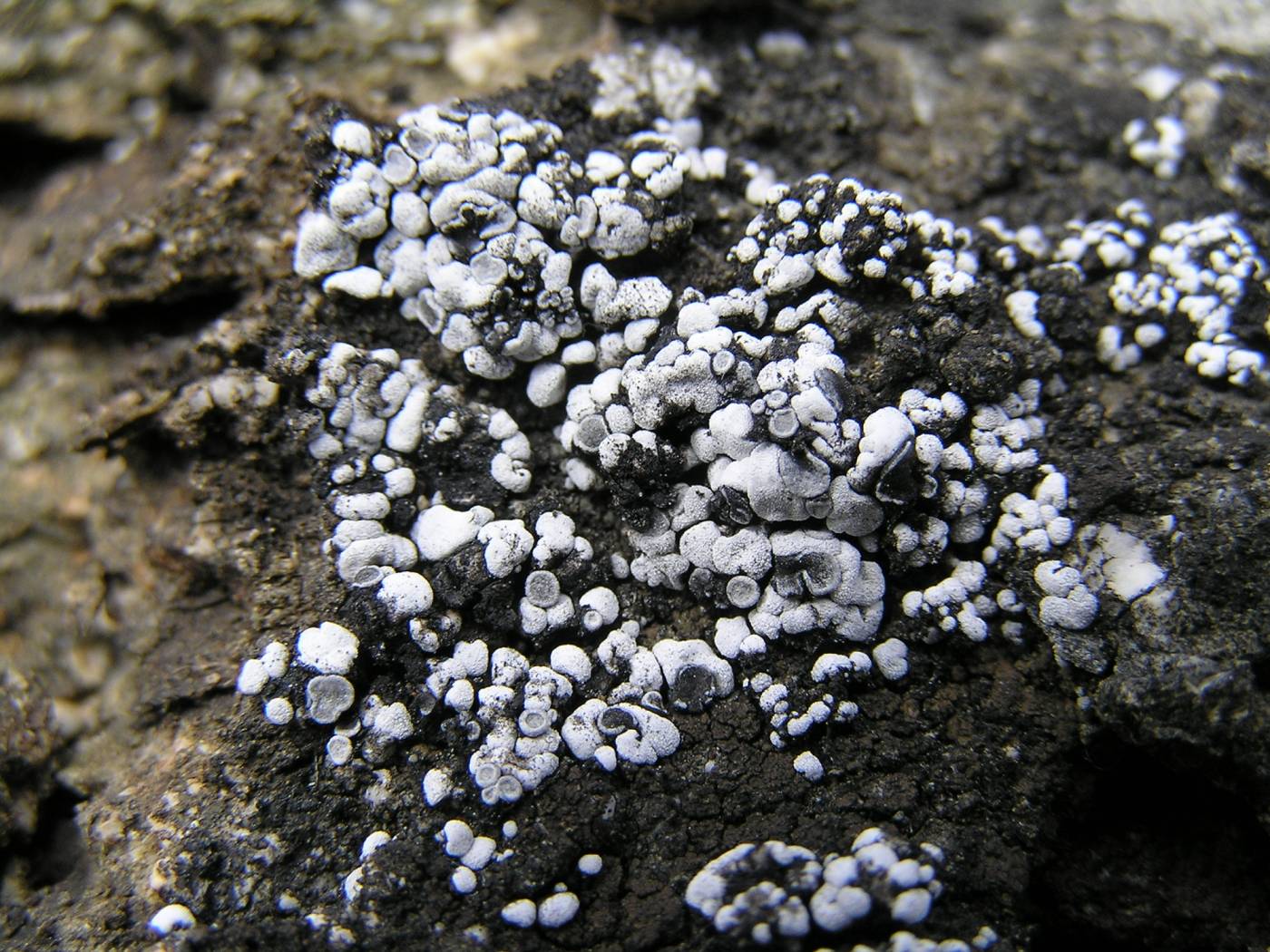Thalloidima diffractum is similar in its pruinose thallus and apothecia to Toninia candida. The latter, however, differs in the rosette-shaped thalli and densely packed squamules. Both species grow on sun-exposed calcareous, often vertical, rocks. While T. candida usually occurs on smooth surfaces of compact rock types, T. diffractum prefers more weathered rocks or cracks and crevices which are richer in soil (Vězda 1970). Similar to other species, it is often associated with cyanolichens when young. It prefers areas with warm climate, but, for example, in the Alps in is known from altitudes over 3000 m (Timdal 1992). The species is widely distributed in the southern parts of Europe and rare in the Czech Republic. Recently, it has been recorded on diabase, more rarely on limestone, in the surrounding of Prague and in Český kras (the Bohemian karst), on calcareous conglomerates near Moravský Krumlov and on limestones near Štramberk.
Literature: Vězda A. (1970): Neue oder wenig bekannte Flechten in der Tschechoslowakei. I. – Folia Geobotanica et Phytotaxonomica 5: 307–337. Timdal E. (1992): A monograph of the genus Toninia (Lecideaceae, Ascomycetes). – Opera Botanica 110: 1–137.
taxonomic classification:Ascomycota → Lecanoromycetes → Lecanorales → Ramalinaceae → Thalloidima
most frequented synonyms:Toninia diffractaRed List (Liška & Palice 2010):EN – endangered
Red List (Malíček 2023):C2 – strongly endangered
Occurrence in the Czech Republic
All records: 21, confirmed 18. One click on a selected square displays particular record(s), including their source(s).
